Your cart is empty
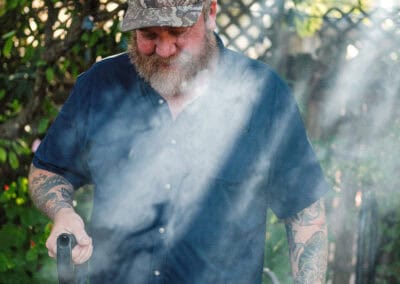
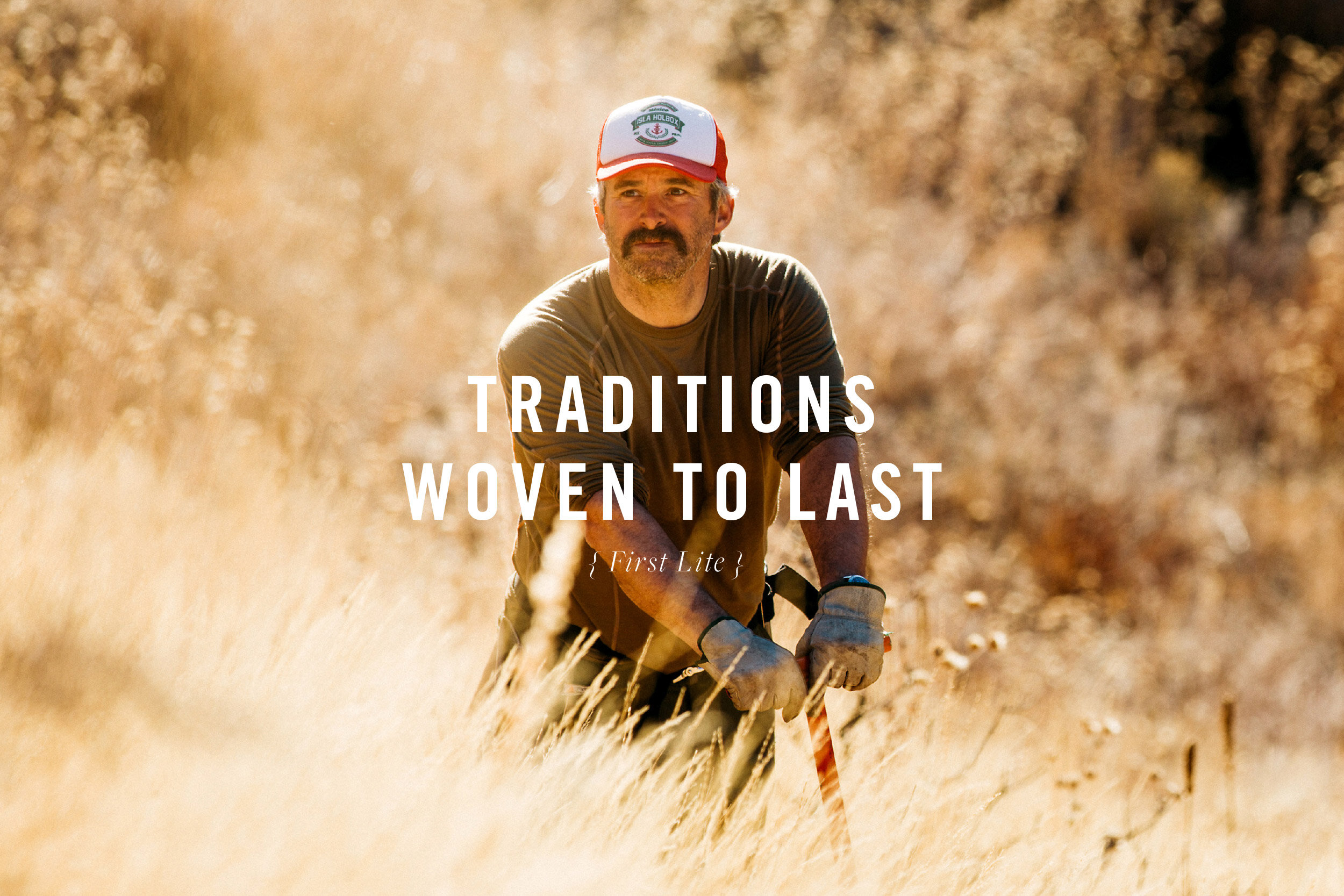
I lean forward on my trekking pole to seek relief from the burden on my back. The dark closes in around me, shrinking my world to a headlamp halo at my feet and the weight of a quartered mule deer divided between my pack and my partners in the late November cold. I wipe the sweat from my brow and grin into the spotlight illuminating me. “Do you want to shed another layer?” he asks. I shake my head. The wool base layer against my skin pulls the dampness of exertion away from my body, the fleece a barrier from the night air chilling the world around me.
His question conjures up memories of my youth and Dad’s unremitting advice, “You never know what can happen in the Sierra Nevadas — layers could save your life.” And on this midnight Montana pack-out, I’m thankful for the layers of traditions I’ve retained and those I’ve added along the way.
Traditions underlie our every journey into the woods; what we wear and carry, how we communicate, and how we conserve our resources. Some traditions we inherit. Others we forge for ourselves, testing our theories in the rugged labs of the wild, with our survival, or at the very least comfort, hanging in the balance. Nestled in the small mountain town of Ketchum, in the Wood River Valley of central Idaho, First Lite has married new traditions with the old, reliable natural fabric of wool. Working from dawn till dusk, founders Kenton Carruth and Scott Robinson, alongside Ryan Callahan and now-President Ross Copperman, became the first to produce Merino wool in a camouflage pattern, taking the U.S. hunting community by storm in 2007. Blazing new trails up a mountain is hard, lonely work, and steady progress requires that each foot is secure before the next step.
First Lite circumvented what had already been done and designed for what was to come. In recent years, their company has reached the summit to find a multitude of loyal customers following their trail, heralding them as a leader in foresight; both in technical apparel and their hands-on approach to environmental responsibility. Despite their size, First Lite was vocal where others were silent when it came to conservation; they could have written checks to get the work done, but instead worked the ground on bended knee, the sweat-stained ball caps proving their commitment far more than a signature ever would. A debt of gratitude is owed to Ryan Callaghan — who now serves as MeatEater’s Director of Conservation — for being the catalyst behind conservation for their company. As employee number one, he made bold strides to incorporate conservation into their company’s DNA, a legacy which has continued with Ford Van Fossan. As a student of conservation biology, Ford’s deep passion for the subject has served the company and on-the-ground conservation well, but even he was skeptical of First Lite’s approach to hot-button issues in the beginning. “There was this decision made that we were going to be a little outspoken about these issues, about public lands and conservation, and while I thought it was the right thing to do, I didn’t think it would grow our business,” admitted Ford. “Fortunately, I was super wrong about that. It’s become a core element of our brand and I think it’s something that differentiates us today.”
“There was this decision made that we were going to be a little outspoken about these issues, about public lands and conservation, and while I thought it was the right thing to do, I didn’t think it would grow our business,” admitted Ford. “Fortunately, I was super wrong about that. It’s become a core element of our brand and I think it’s something that differentiates us today”
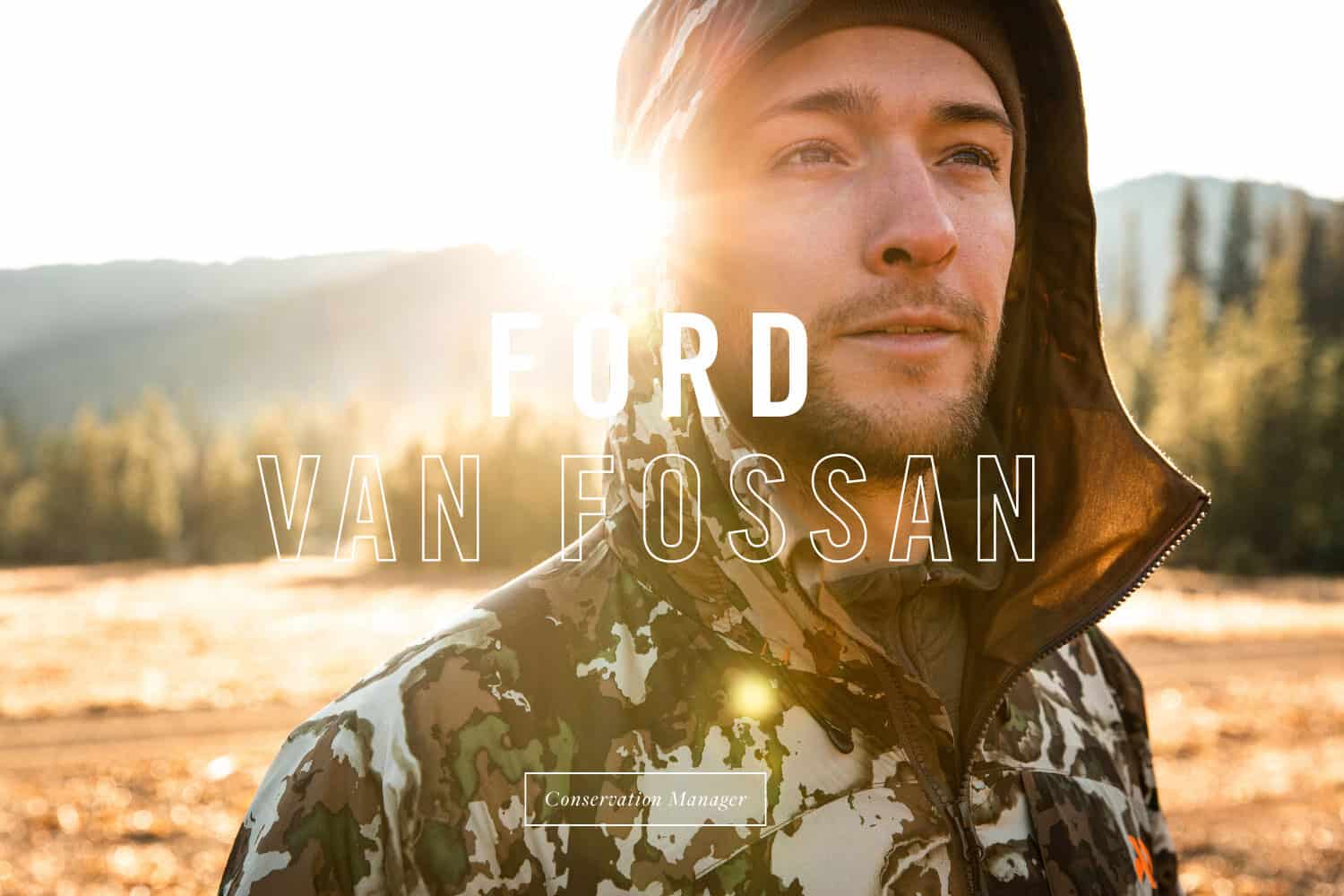
While First Lite’s outspokenness about conservation individualized them in the beginning, today they’ve gone above and beyond by implementing ways of giving back to the wild places they promote exploring. They employ initiatives such as “Round-Up for Conservation,” which allows customers to round up their purchase by a dollar amount of their choosing to benefit a selection of conservation organizations that are doing good work in the field.
Ford decided to push the envelope even further with company-funded conservation — directly.
“I was looking around for where dollars turn into deer. That’s where the rubber meets the road on this, and there so often seems to be a lack of clarity on where our money goes,” said Ford, who took a deep dive into where they could physically make the biggest impact, and landed on winter range for wildlife in Idaho. In their region, deer and elk come down out of the mountains in Central Idaho and winter lower in the sagebrush desert, traveling a general north-south migration. They’re eating bitterbrush and sagebrush all winter to conserve calories in the slightly warmer temps with less snow.
According to Ford, the suppression of wildfires has led to out-of-control burns when they do come through, which decimates the winter range that deer and elk survive on. The burned area is quickly pioneered by an invasive plant called cheatgrass, which slows down a succession of sagebrush and bitterbrush. “While deer will eat the cheatgrass, it’s of so little nutritional value. We’ve found plenty of deer that died of starvation with a belly full of cheatgrass.”
Efforts have been made over the last decade to raise bitterbrush seedlings and hand-replant those shrub communities in Southern Idaho. “First Lite is now directly purchasing thousands of those shrubs ourselves, and our employee base is planting them. We’ve taken on this direct on-the-ground work as a company, slowly rehabilitating this local area acre by acre.”
Other brands are following suit, which for Ford has been thrilling to watch. “I think that trend for ‘private corporate conservation’ is one of the more exciting things we’ve seen in the industry here in the last couple of years.”
For Ford, it all began in a pit blind, the reverberation of a shotgun blast, and a goose falling from the Maryland sky. Growing up on a farm in the “Old Line State,” he was playing bird dog for his dad at five years of age.
“I would go out in the dove field with him, and pick up doves that he shot, because we didn’t have a dog,” Ford explained with a laugh. By the age of nine, he had taken hunter’s safety and joined the long-standing goose hunting tradition.
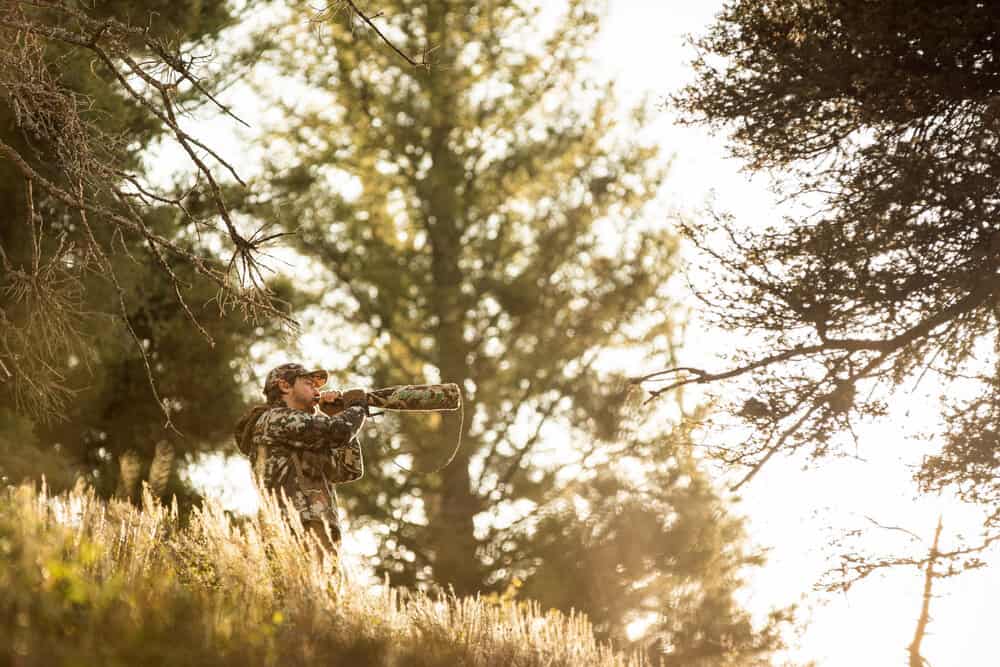
In the Van Fossan family, goose hunting is a social event. On special occasions, there can be over twenty guns divided between three blinds, looking to the skies. “It was very social, and in a way that I feel like Western hunting really isn’t; it’d be hard to replicate that exact tradition here,” said Ford. “I’ll be going back to Maryland for Thanksgiving for as long as they’re around — honestly, it’s a tradition I want to keep.”
Ford has added new traditions to his hunting repertoire out west, hunting every elk season opener with his friend Josh, who welcomed him when he first arrived in Ketchum. That open invitation from Josh would be a deciding factor in how Ford views the hunting industry’s need for change. “While unintentional, I don’t think hunting has been made accessible enough. We need to be more welcoming and inclusive,” he said adamantly. “Positioning ourselves as hunters and non- hunters is setting ourselves up for failure.”
In an effort to change the conversation, First Lite set up the R3 focus day: a two-prong initiative designed to encourage adult-onset hunters. Headquarters will host a hunter’s safety course composed of Backcountry Hunters and Anglers “Learn to Hunt” curriculum and Hank Forester’s QDMA Field to Fork course. Ford and Casey Hawkes have both become Idaho State Hunter Education instructors in a desire to continue the mentorship they received as young men.
Designing the course in a mountain town alters the trajectory of the class for many. “They don’t need to know how to pack a backpack, or filter water. They need to learn how to hunt and to be spoken to as an adult, whereas most Hunter’s Ed curriculums today are designed for 10-year-olds,” explained Ford.
Ford and Casey aren’t the only First Lite employees to step into positions of leadership — their mentorship pledge extends throughout the whole office. “We’re going to incentivize our team, so that every person who mentors a new hunter next fall or next spring will be entered to win a prize,” said Ford, who believes that the one-plus-one regimen will grow exponentially to encourage the tradition of hunting to flourish.
Their story has been shaped by men and women from all over the country, weaving their unique threads of tradition into a new and endurable fabric that will cloak the hunting community for generations to come.
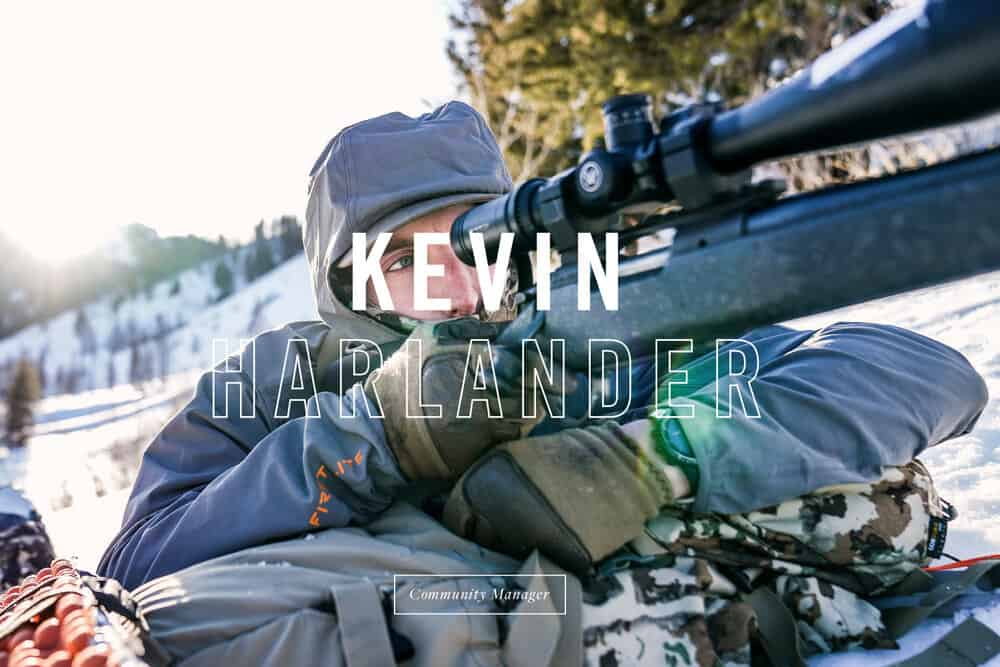
For Minnesota transplant and Community Manager Kevin Harlander, the traditions established by Scott, Kenton, Ryan and Ross have unified the employees together in such a unique way that has spilled over to create an unprecedented loyalty among their customers as well. “Being around a group of people that are so like-minded in the pursuit of what they do is something that I don’t think exists a lot in other workplaces. There’s so much connectivity to the mission.”
The First Lite headquarters physically reflects their unique company culture, creating space for an arrow-fletching and bullet-reloading bench, a partial mechanic garage, a fully stocked bar, four game freezers, two crowded gun safes, and a gear room filled with waders, skis, packs, mountain bikes, decoys, and a small duck boat. By living the life they center their business on, they can serve their customers in unprecedented ways. If a customer calls about hunting in Alberta, odds are that someone in the First Lite office has hunted there and can talk to them, which is part of the First Lite tradition as well.
Kevin arrived with long-standing hunting traditions of his own, and found new traditions to add to his lifestyle at First Lite. “For me, this company has created a new tradition where at 5:01 p.m., that door is swinging, and everybody from customer service all the way to our president is out there getting after it in the woods,” explained Kevin.
The woods of the Midwest shaped Kevin’s view of the world, following his dad and grandpa’s lead in search of what hunting would come to mean. “I was really fortunate to grow up being part of a family that hunted, and experiencing the traditions of hunting at our place in northern Minnesota.”
Hunting for Kevin was a once-a-year event, beginning in mid-November when the Harlander family would make their way to their family deer camp; a cabin built by his dad and grandfather near the headwaters of the Mississippi River. “The pilgrimage to deer camp always signaled the start of fall for us; there’s an air of preparedness and tradition of getting ready to go to deer camp.”
It wasn’t ever about killing deer, Kevin said, but a sense of belonging during a critical time in a young man’s life. A time to learn what is important; belonging as part of a family and being self-sufficient; a carding of the mind and character being intentionally woven into something much stronger. “I learned how to do things right; how to build a fire; how to identify trees and figure out where tracks led. That time was just so pivotal to all these other skills that you need to have in your work and life.”
Like many men of his generation, Kevin felt the lure of adventure and travel tugging at his young mind. At 19 years of age, he headed west and began firefighting for the state of Oregon. “The people in Oregon took me into the fold,” explained Kevin, a fold which invited him to take his first steps into the woods in search of elk, adding a layer of experience to the hunting traditions he held dear.
“It turned into this obsession for me, something that I knew I was supposed to do,” said Kevin, who would go on to become an elk hunting guide in eastern Oregon.
Guiding for Kevin allowed him to follow in his dad and grandfather’s footsteps hundreds of miles away, passing on the tradition of hunting to others — albeit strangers. It would also add to his quiver of skills needed to understand how to communicate with those who were new to the sport. This would serve him well in his new role as community manager for First Lite.
“The tradition of the sport can only be passed on if people who are really passionate about it choose to engage with people who aren’t. Our traditions need to change, in that we need to be way more inclusive with who we involve in hunting”
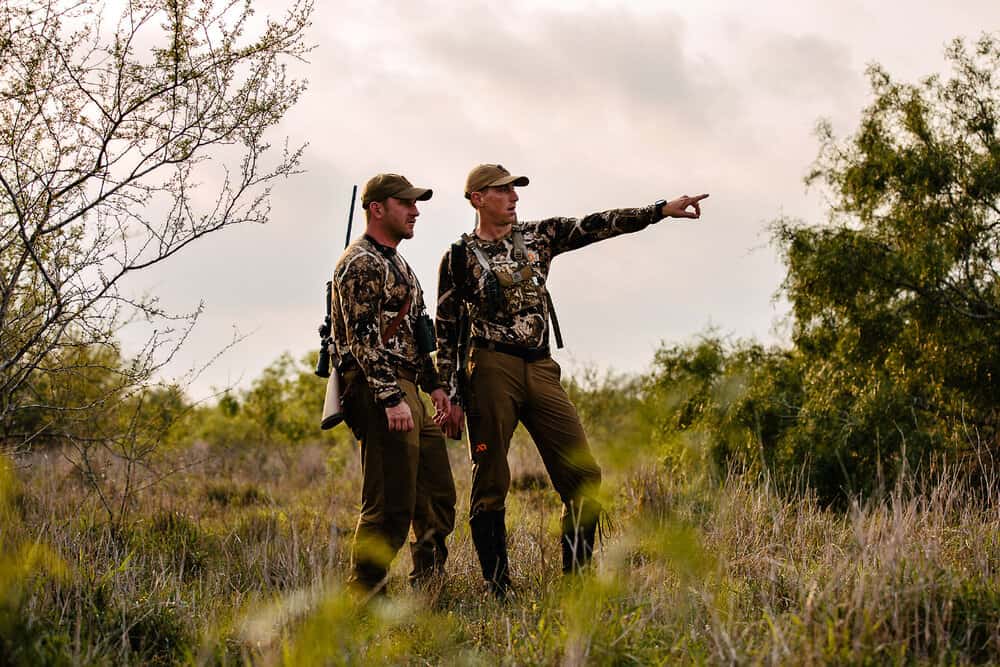
“The tradition of the sport can only be passed on if people who are really passionate about it choose to engage with people who aren’t. Our traditions need to change, in that we need to be way more inclusive with who we involve in hunting,” explained Kevin, whose own life has been enriched by the passionate people who have been willing to introduce him to new places and new species. “I think as we continue to bring new people into the fold, there’s going to be more traditions that evolve and change and come to light.”
Life at First Lite is very cyclical; their office is ruled by the seasons. Spring turkey hunting and searching for sheds and mushrooms blooms into bear hunting, fishing, and scouting throughout the summer, with the rising anticipation of antelope archery season, bird hunting, deer, elk, moose, and sheep, and right on into spring again.
“The difference between growing up a whitetail hunter and a bird hunter and then transitioning to a Western hunter is that we get to do this stuff every day of the year,” marveled Kevin, who still makes the pilgrimage back to camp with his family every year. Some traditions are worth their weight to carry throughout the decades.
From the beginning, First Lite gathered people who possessed talent and passion, but most of all character, creating a company culture that is for the people, and for each other before anything else.
“Sometimes the best person for the job doesn’t hunt or doesn’t fish, but they do a good job of bringing on those who have the ethos of how to be a good human; those that appreciate the natural world in a different way,” said Kevin, explaining that First Lite conducts their business based on the traditions of the family. “Our relationships supersede that of a normal business. They’re part of our story, and we show up for each other in unconventional ways, filling the needs we see.”
Their relationships with their staff, ambassadors and partners appear seamless; individuals spinning together in tandem with very little coaching. They’ve all been selected because of who they are rather than what they do, and this leads to a tangible, cohesive mindset.
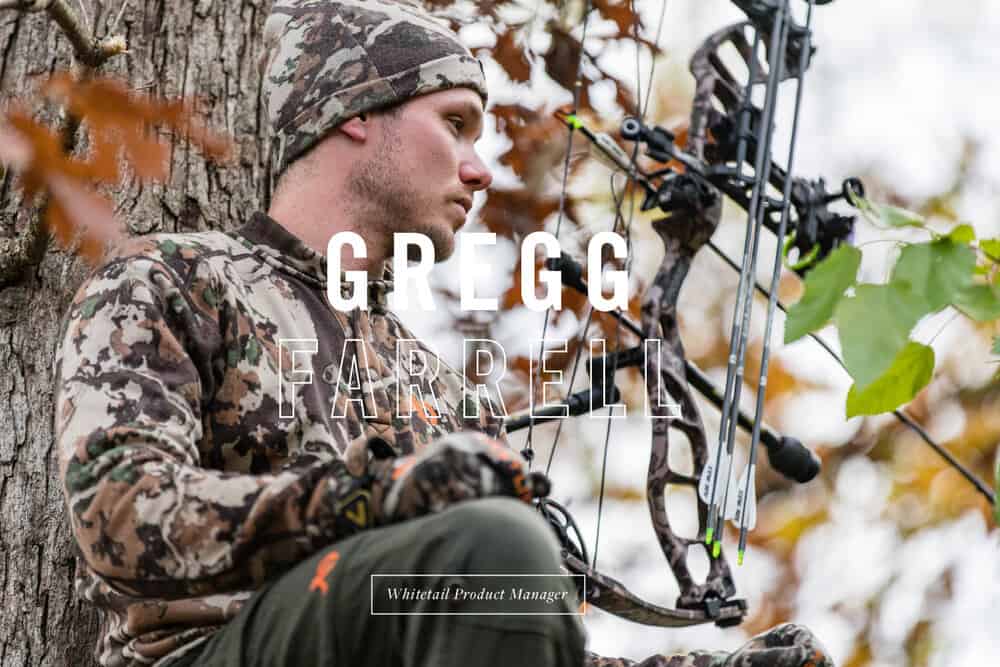
First Lite’s whitetail product line manager, Gregg Farrell, believes that the tradition of sharing has been foundational to their team, their company, and their customers as a whole. A Monday morning in fall leads to a slow start at the First Lite office, with dogs winding between legs, hands holding coffee cups, and the retelling of the weekend hunts.
“To have a group of people with this shared level of enthusiasm for these hunting pursuits was not something I’d experienced previously. Sharing those experiences on a Monday morning, it’s like every hunt you go on, you almost go on it twice — when you go on it and then when you relive it with the telling of it,” added Gregg. “That’s a new part of my hunting tradition since working at First Lite.”
As a Midwestern school teacher, Gregg brought traditions of his own to this Idaho family; although unconventional out west, deer stand whitetail hunting has been the passion of his life.
Before Gregg could even legally hunt, he was, like many Midwesterners, sitting in a tree stand, earning the right to continue practicing the art of stillness in the shadow of his father and uncle. His mentors had taught themselves, forging their traditions with upland birds, turkeys, and then the lure of whitetail hunting.
Their family hunting camp was just down the road from where Gregg called home, and his dad often picked him up from school when the clock struck three to head to their respective deer stands, bows in hand.
Ironically, his long-held heritage of bowhunting, although foreign to Idaho, would mean he was cut from the same cloth as the First Lite community; they both take hunting very seriously. “You’re doing it before work, you’re doing it after work. For me as a kid, it was before school, after school and that’s very much like when I lived in Idaho. When the season’s on, everybody’s coming into work in camo and leaving work in camo.”
Gregg’s entrance into the First Lite family came alongside jokes about eating cheese curds in trees. However, whitetail archery hunting has a worthy ambassador in Gregg. “Being so fired up about it, it has definitely changed some people’s attitudes. It’s totally in my blood,” said Gregg who is now working in a position that he designed himself.
A self-proclaimed ‘gear nerd,’ Gregg used to purchase outdoor gear and then modify and improve it on his own. It’s a unique vision and skill set that Ross recognized early on, adding Gregg to the payroll in hopes of what has been created today.
While First Lite was largely built around Western big game hunting, Gregg saw the opportunity to fill a need in the whitetail hunting space — pushing the needle
in the right direction.
“I’ve had access to these unbelievable technologies both in textiles and trims. All the things that we’ve built our very technical Western line with I’ve been able to utilize and build world-class whitetail gear that hasn’t existed in that space before.”
“I’ve had access to these unbelievable technologies both in textiles and trims. All the things that we’ve built our very technical Western line with I’ve been able to utilize and build world-class whitetail gear that hasn’t existed in that space before.”
As the new role developed and the product line expanded, Gregg returned home to Wisconsin, back to where it all started for him, breaking a new trail for First Lite.
First Lite’s growth has matched that of the wool itself: a natural growth with a yearly harvest before it is cleaned, carded, spun, and woven; a constant breaking down, testing, and rebinding of the strongest, most resilient fibers until they’ve reached a worthwhile product.
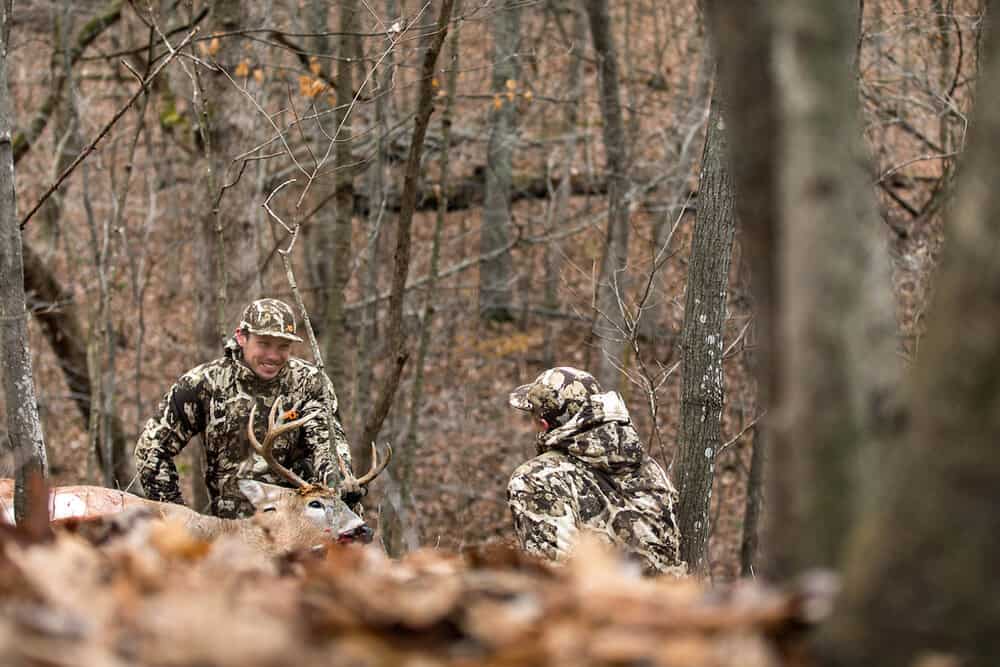
They are an apparel company born not out of competition but innovation, who instead of flooding the marketplace as their popularity grew, operated under the adage that “if it ain’t broke, don’t fix it,” and dedicated themselves to building only what was missing from the outdoorsman’s kit.
“What that did was set the precedent that we don’t bring a product to market unless A) it solves a problem that’s out there, or B) this product isn’t out there yet,” explained Gregg, noting that in years with fewer product releases, each piece was a problem-solver. “We’re able to do that because we weren’t forced to grow at any specific rate.”
First Lite won’t release a product until it has been thoroughly tested, used and abused in the field and additionally sent to a third-party testing facility to ensure an unbiased review. “Our customers can’t be the guinea pigs. It’s not fair for us to ask somebody to spend their hard-earned money unless it’s a needed, approved product.”
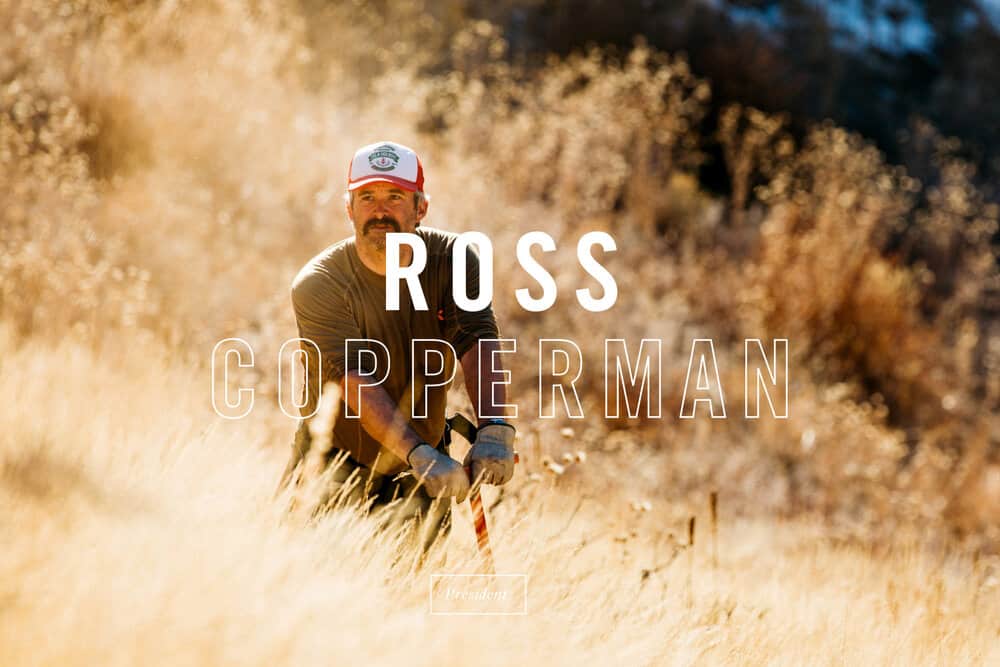
First Lite’s company culture remains largely unchanged as the office has grown from eight to nearly 30 employees in recent years. Today there are still many canine companions napping beneath desks, arrows being built, ammo being reloaded, and dirt bikes reassembled in the garage. “That’s part of what’s also been unique about the growth of the company. We’ve been able to maintain that culture — our identity,” said Gregg.
President Ross Copperman began eight years ago as employee number two, and since then has helped the company navigate its growth in a way that is sustainable in the fickle marketplaces of commerce today.
In those early days, Ross, Ryan Callaghan, and the original founders of First Lite, Kenton Carruth and Scott Robinson, used Merino wool in winter sports ranging from alpine skiing to ski touring and ski mountaineering, as well as spring mountain biking and hiking.
“Scott and Kenton realized that you could go on a multi-day trip and use the
same base layers with no odor,” Ross explained. “As hugely passionate archery hunters, they wondered why no one used it for hunting. They did their homework and found out that it was because nobody knew how to print camouflage onto 100% Merino wool.”
While the word ‘wool’ conjures up memories of hugging Grandpa around the waist, our cheeks roughed by the prickly fabric of his coat, or the itchiness of an old scarf wrapped around our necks destined to be abandoned despite a mother’s plea, Merino wool rose in popularity because its thinner and softer fibers made it more comfortable when worn close to the skin.
Merino wool base layers regulate body heat better than most synthetic fabrics and retain comfort in a wider range of temperatures, qualities which First Lite knew would alter the experience of hunters who experience hours of high exertion as well as long bouts of stillness in a single hunt. When it’s warm, the wool can absorb 30% of its weight in moisture and transport that moisture and warm air away from the skin, which also helps to control odor. When it’s cold, the wool traps the warm air and keeps it close to the skin. Its absorption of light, but lack of UV reflection, keeps Merino wool from broadcasting your location, and wool in motion creates no sound.
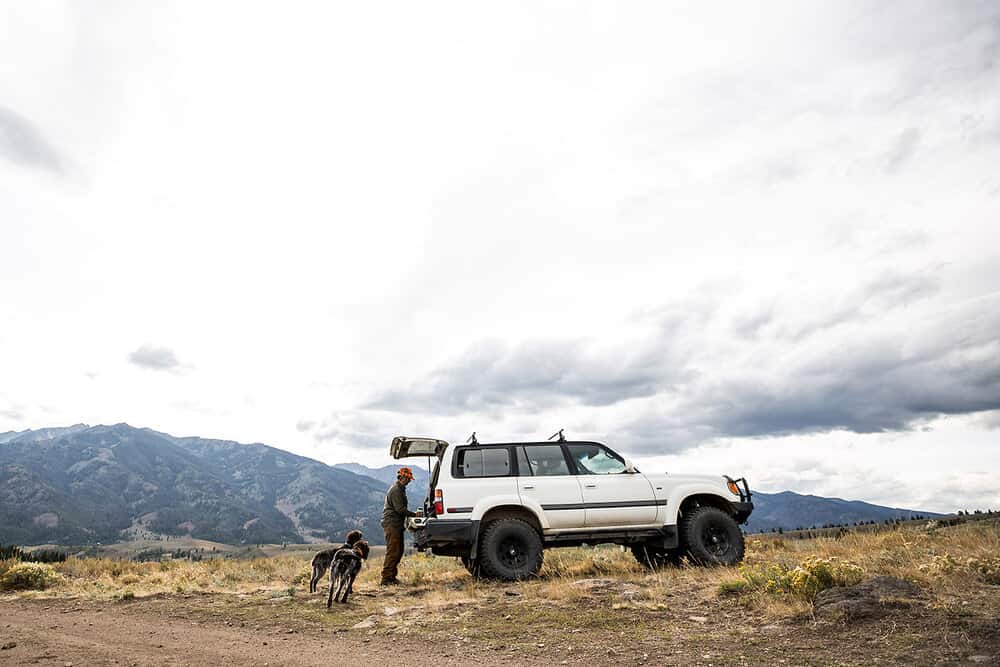
A long-standing tradition of outdoorsmen was summiting new horizons of utilization when they began testing how the fabric would retain printing. “They started with a very simple pattern,” said Ross. Today, First Lite is able to utilize nine colors in their patterns, an ongoing evolution of design. “As we developed technologies, we became better at it. To print at that level of detail and most importantly at that consistency is really difficult, but I feel like we’ve gotten where we want to be.”
Ross couldn’t have foreseen where he would be today when he was introduced to hunting by his mom in Portland, Oregon. As a 10-year-old, Ross shot a rockchuck, and when he brought it back to camp, his mom impressed upon him the weight of harvest, and cooked it over the fire for him to eat.
Ross continued to hunt, albeit more selectively, taking advantage of the fantastic waterfowling around his hometown of Portland, Oregon. From the delta of the Willamette and the Columbia Rivers, he charged ahead through freezing mornings in his six-dollar army surplus waders all through high school.
After he moved to Idaho, his hunting pursuits expanded to big game rifle and archery hunts, all of which, for Ross, were tethered by food.
“Hunting what I enjoy eating, or what my family enjoys eating, is kind of my number-one passion at this point,” said Ross, who has begun passing on the traditions of hunting to his two daughters. Over the years, upland hunting has risen in Ross’ esteem because of its simplicity. “I love hunting mule deer and elk, but it’s a big undertaking. At this age in my life, being able to just throw the dogs in the back of the truck; grab the shotgun and go out and spend an afternoon with them — I just really appreciate the simplicity of it.”
With Ross at the helm of First Lite, their company has retained its simplicity as well. “There were only four of us when I started, so it’s always been very informal, but it was a ‘get-shit-done’ place and still is today despite our significant growth,” said Ross. “I 100% subscribe to the theory of hiring the smartest people we can and letting them figure out how to do things, and it’s worked really, really well.”
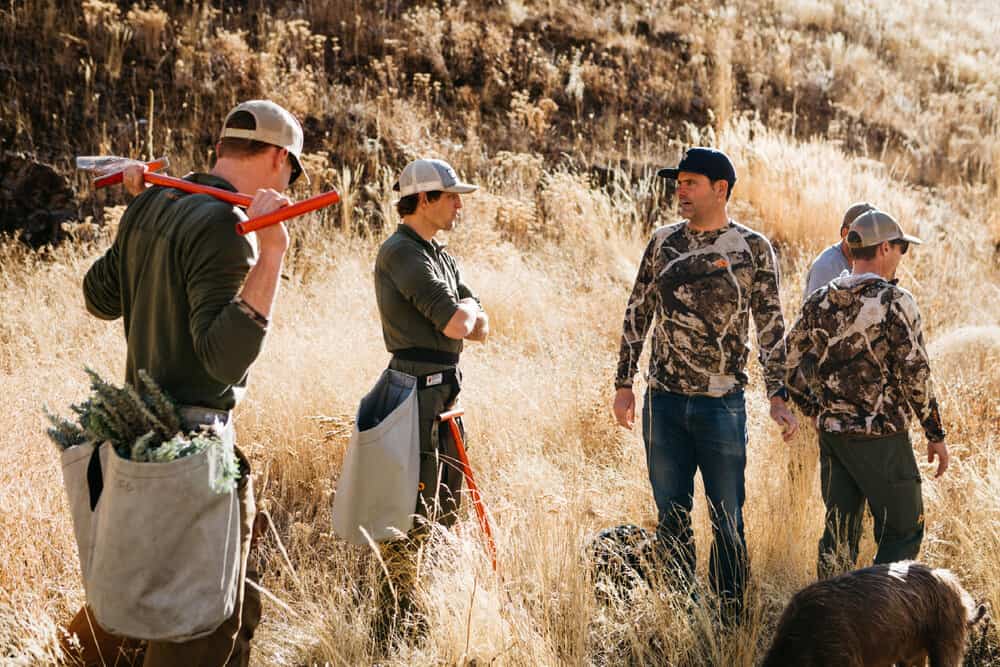
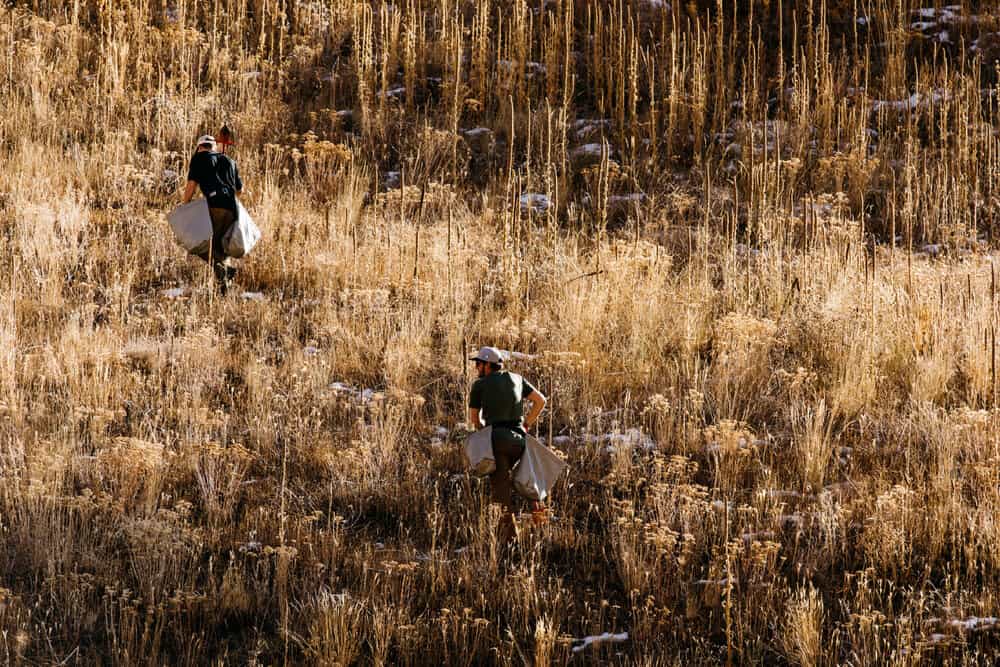
Despite the informal atmosphere, they are serious about empowering their people to enjoy their outdoor pursuits, wherever the mountain may lead. “Hiring the people who actually do it, live it, walk it, and believe in it — it’s been a huge part of why we’ve been successful. Making sure that our employees can get outside and experience the mountain-town lifestyle keeps them happy and engaged, especially during hunting season.”
“Instead of putting any certain type of hunting that might not be accessible to everybody on a pedestal, we celebrate the act of participating in the food chain.”
First Lite has utilized their sphere of influence well, celebrating all types of hunting with a wider lens for the tradition as a whole according to Ross. “Instead of putting any certain type of hunting that might not be accessible to everybody on a pedestal, we celebrate the act of participating in the food chain.”
Ross is thankful that other brands have begun creating their own traditions of conservation as well. “I’m really proud of the fact that I think that we have taken a de facto leadership position in mobilizing people and showing the importance of conservation to a younger generation.”
From wool to wear, we are shaped by our environment. Whether sitting in a Midwestern tree stand with company or stalking a quarry in the solitude of the mountain West, there are traditions to which we hold fast and others that are shed as we age.
First Lite has left behind what doesn’t serve them and their community as they’ve forged a new trail up the mountains of production. Committing to carrying their cornerstones of conservation, culture and inclusion to the top regardless of the weight, they’ve allowed their path to be dictated by the needs of their environment, and their customers instead of peripheral competition. As a young leader in a long-standing industry, First Lite has utilized the age-old traditions of hunting and refined them into a richer legacy that can withstand the rigorous and winding trails of time.
Related Stories

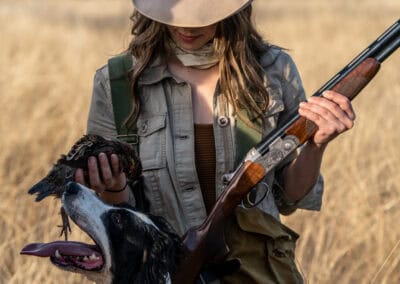

Latest Stories


